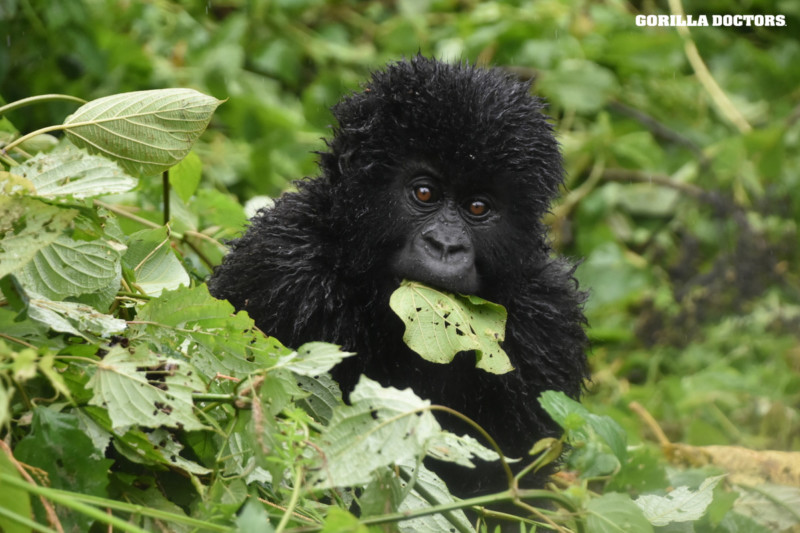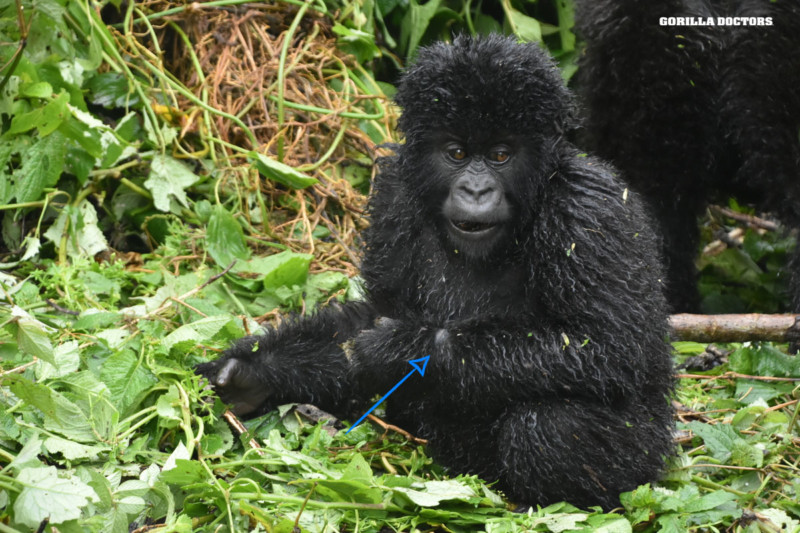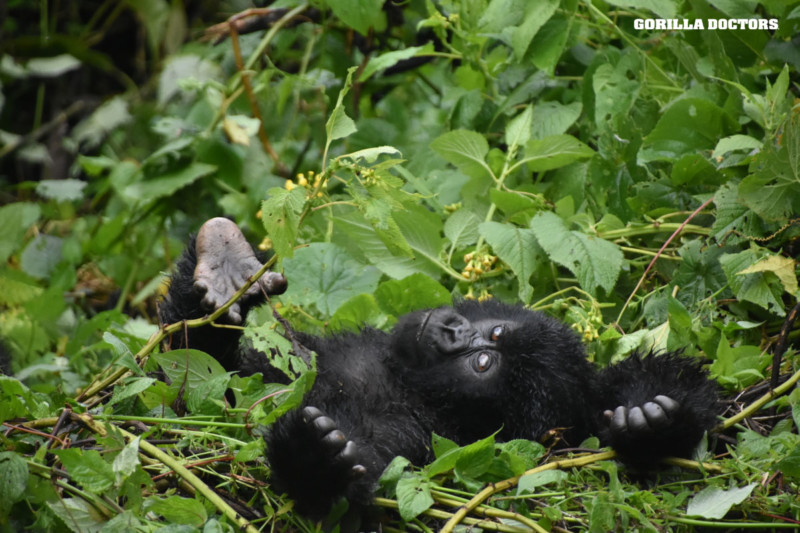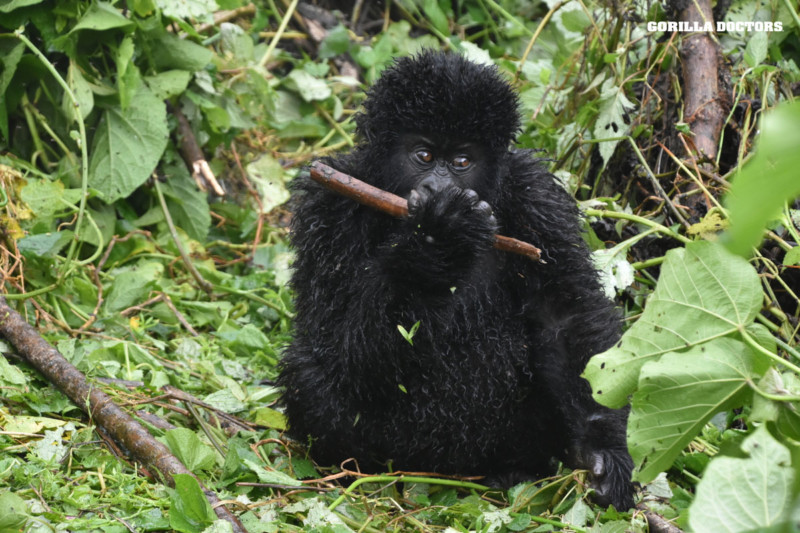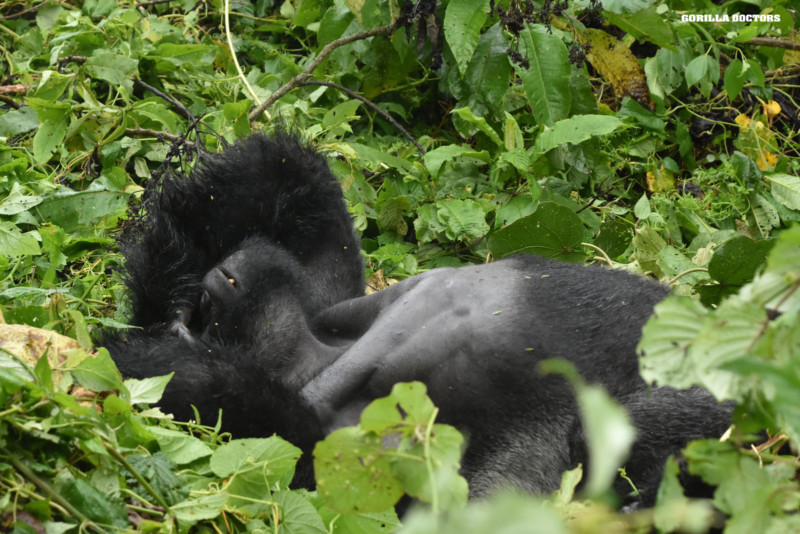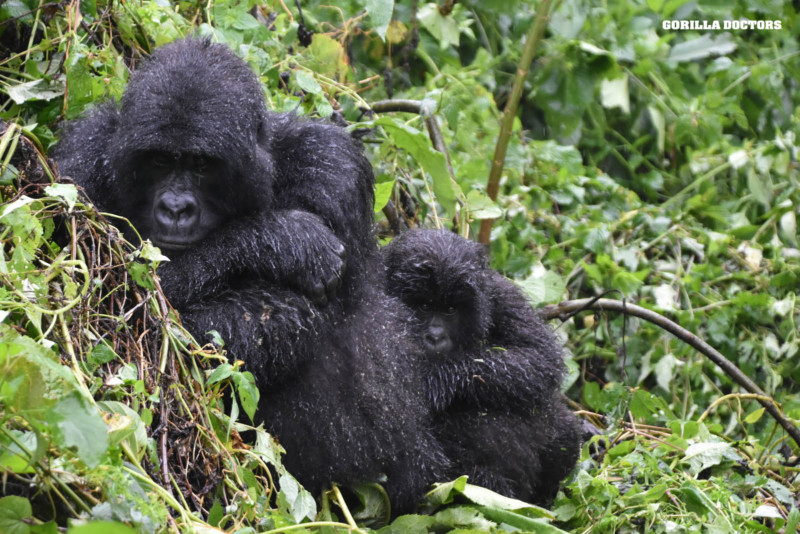UPDATE: Infant Theodore Thriving after Snare Removal
By Gorilla Doctors Staff on Wednesday, October 7th, 2020 in Blog.Back in July, Dr. Eddy and Jean-Paul successfully removed a snare from Theodore, a two-year-old infant mountain gorilla from Humba group in Virunga National Park, DR Congo. On September 23rd, Drs. Eddy and Fabrice (our newest Gorilla Doctor) conducted a routine health check of Humba group and found Theodore thriving. According to Dr. Eddy’s field report, despite heavy rain, Theodore was “so amazing in playing and being very active” (see video below).
Dr. Eddy also reported that the wound on Theodore’s left wrist, where the snare had broken the skin, was fully healed, his hair was mostly grown back, and there was only a slight visible scar.
Humba Group Health
During their health check, they also found all 14 members of Humba group healthy. When the rain stopped and the sun came out, several members of the group started drying their hair by rolling around in the grass. Humba group is currently led by silverback Mahindure who leads 10 members of the group while former dominant silverback, Humba, still ‘controls’ adult female Bonane and her infant, Ila (Humba is the father of Ila).
A Note from our Executive Director
The absolute highlight of my job is receiving updates from our field veterinarians showing the progress of an individual gorilla who was treated by Gorilla Doctors, like little Theodore. Our work is considered a form of ‘extreme’ conservation with significant resources focused on the health of individual animals – in our case, endangered mountain gorillas and critically endangered Grauer’s gorillas. But, as the recovery and growth of the mountain gorilla population demonstrates, in conjunction with other activities (like anti-poaching patrols, community development and research), Gorilla Doctors’ life-saving veterinary medicine can have population-level impact.
Our work is credited for half of the annual population growth rate of habituated mountain gorillas, while the annual population growth rate of unhabituated mountain gorillas is negative 0.7% – the growth rate is negative for those mountain gorillas we aren’t able to treat (because they are unhabituated, we cannot get physically close enough to conduct visual health checks or administer medication)1. Every time we can save a gorilla, the reproductive potential for that individual is also saved. Gorillas are long-lived and slow to reproduce. Every life is essential in order for the population to grow and thrive.
Reference –
1Robbins, et al. (2011) Plos One 6(6): e19788
Follow us on Facebook, Instagram and Twitter
Subscribe to our Blog and receive posts right to your inbox.


 Donate
Donate
